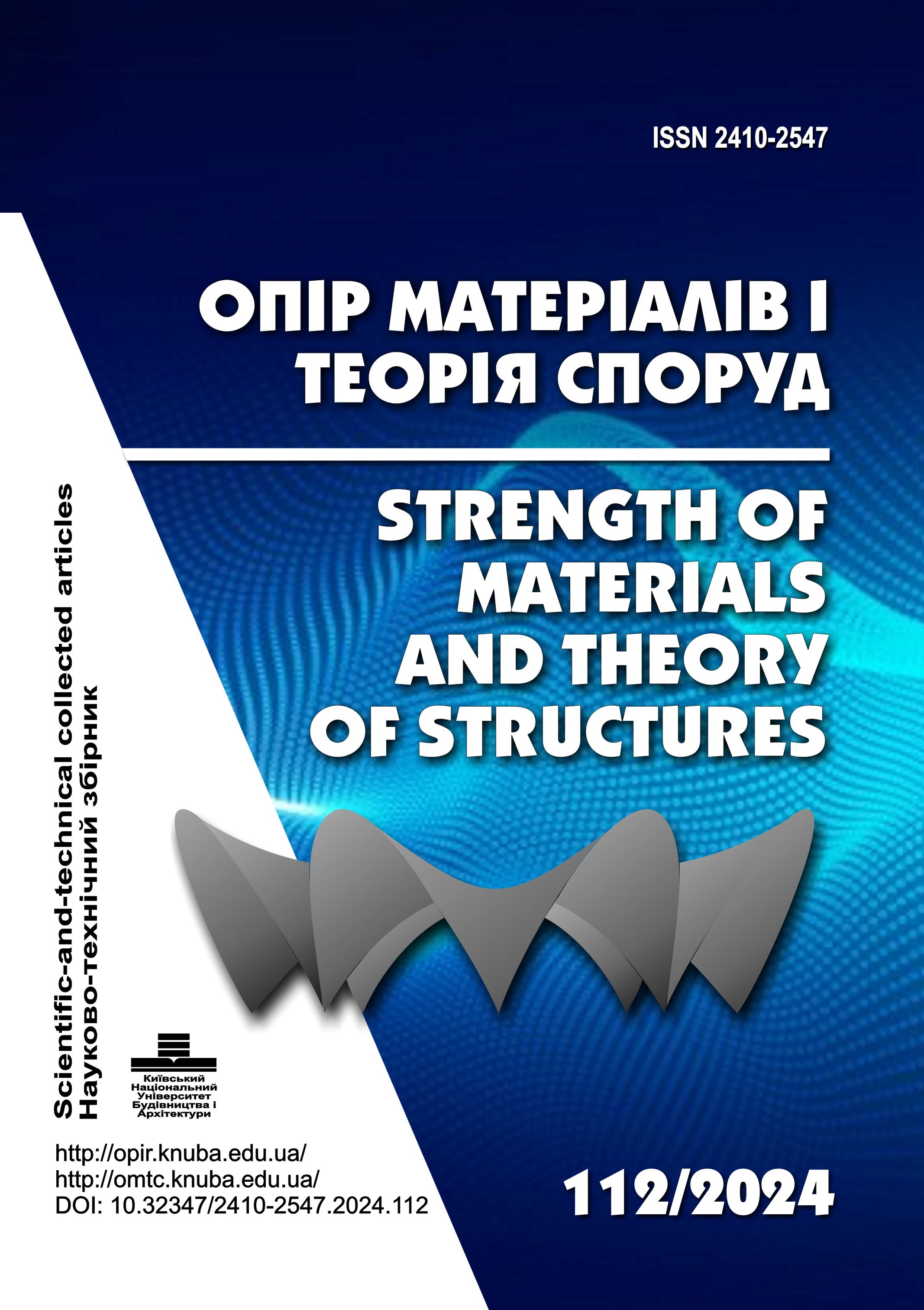Methodological basis of BIM-analysis of damage and assessment of impacts, consequences, resources for restoration of buildings and structures
DOI:
https://doi.org/10.32347/2410-2547.2024.112.302-315Keywords:
restoration of buildings and structures, method of system assessment, technical condition, damage analysis, assessment of impacts, consequences, resourcesAbstract
The methodological basis of the BIM-analysis of damage and assessment of impacts, consequences, resources for the restoration of buildings and structures is the basis of the methodological foundation that provides a holistic approach to the planning and development of the territory, including multifactorial aspects. There is a need to study the components of damage assessment of buildings (structures) and to develop a systematic method of their diagnosis on a damaged object in order to achieve efficiency in making a decision on reconstruction or the impracticality of restoration depending on the generalized coefficient of destruction. The task of the research consists in the development of a step-by-step assessment algorithm - a method of systematic assessment of damage to buildings and structures based on the application of the generalized Harrington function as a tool for determining the level of technology development, using a system of indicators, the normative values and weight of which are established by certified civil engineers under the condition of substantiation, regarding feasibility reconstruction or impracticality of restoration. The developed methodology for assessing damage to buildings and structures consists of a number of interconnected sequential stages aimed at obtaining a quantitative and qualitative assessment, choosing a comprehensive strategy for assessing buildings and structures.
To achieve the specified goal, it is proposed to develop a methodological basis for the BIM analysis of damage and assessment of the effects, consequences, resources for the restoration of buildings and structures, which can be the basis for performing construction and technical examinations, which is the determination of the technical condition of the object of examination and the causes of its damage and destruction , in four stages: planning, diagnosis, implementation, control. The given technique will help to make this process more organized and efficient, and its implementation in information modeling can provide a technical opportunity to move from the traditional process of information management to the creation of expert models to optimize key project indicators based on reliable, consistent data, contributing to the creation of the necessary conditions for further transition to the principles of managing the assessment of impacts, consequences, resources for restoration, and the subsequent life cycle of construction objects.
References
Hrynyov A.V., Dedilova T.V. 2008. Management of innovative development of industrial enterprises in a global environment: a monograph. Kharkiv National Automobile and Road University, 148 c.(ukr)
Fedulova L.I. etc. 2005. Innovative development of the economy: model, management system, state policy. NAS of Ukraine, Institute of Economic Forecasting. K.: Osnova, 550 p.(ukr)
Mandyuk O.M. 2011. The essence and peculiarities of the organizational and economic mechanism of transformation of property relations. Bulletin of the National University of Water Management and Nature Management. No. 2, pp. 139–144.(ukr)
Makatora D.A., Lisun Y.V. 2016. The Harrington function as a tool for determining the level of technology development. Bulletin of the Kyiv National University of Technology and Design. No. 6 (105), pp. 80–85.(ukr)
Zharkov Yu., Tsiciliano O., Makatora D. 2004. Optimizing the work criteria of conformity assessment bodies using the Harrington method. Standardization, certification, quality. No. 4, pp. 36–38.(ukr)
Hrabovetskyi B.E. 2010. Methods of expert evaluations: theory, methodology, directions of use: Monograph. Vinnytsia: VNTU, 171 p.(ukr)
Prusov D.E., 2020. Scientific substantiation of engineering preparation measures due to the influence of construction in the dense building conditions. Strength of Materials and Theory of Structures, Vol.104. - P.229-241. [DOI: 10.32347/2410-2547.2020.104.229-241]
Prusov D.E. 2022. Assessment of interaction the new construction object at full load and the surrounding building in the dense urban development conditions. Strength of Materials and Theory of Structures, Vol.109, 455-466. [DOI: 10.32347/2410-2547.2022.109.455-466]
Petrochenko O.V., Prusov D.E., Kuzmin R.I., and others. 2023. Aspects of integrated management in urban planning and territorial planning as an integral part of comprehensive restoration of territories. The educational and methodological manual. K.: IINO KNUBA, 572 p.(ukr)
The State Construction Standardof UkraineDBN-В.1.2-5:2007. Scientific and technical support of construction objects. Appendix A.(ukr)
The State Construction Standardof UkraineDBN-В.1.2-14:2018.The system for ensuring the reliability and safety of construction objects. General principles of ensuring the reliability and structural safety of buildings and structures.(ukr)
The State Construction Standardof UkraineDBN-B.2.2-12:2019. Planning and development of territories.(ukr)
The State Construction Standardof UkraineDBN-V.1.2.-2:2006.System for ensuring the reliability and safety of construction objects. Loads and influences. Design standards.(in Ukr.)
The State Construction Standardof UkraineDBN-А.2.2-3-2014.Composition and content of project documentation for construction. (ukr)
The State Construction Standardof UkraineDBN-V.3.1-1-2002.Repair and strengthening of load-bearing and enclosing building structures and foundations of industrial buildings and structures. (ukr)
The State Construction Standardof UkraineDBN-V.1.1-46:2017.Engineering protection of territories, buildings and structures against landslides and collapses. Substantive provisions. (ukr)
The State Construction Standardof UkraineDBN-А.2.1-1-2014.Search, design and territorial activity. Engineering searches for construction.(ukr)
The National Standard of Ukraine DSTUB.V.1.2-18:2016. Guidelines for the inspection of buildings and structures to determine and assess their technical condition.(ukr)
The National Standard of Ukraine DSTU B.V.2.1-2-96. Foundations and foundations of buildings and structures. Soils. Classification.(ukr)
Standard of the Organization of Ukraineof Housing and Communal Services75.11–35077234.0015:2009.Residential buildings. Rules for determining the physical wear and tear of residential buildings.(ukr)
Downloads
Published
Issue
Section
License

This work is licensed under a Creative Commons Attribution 4.0 International License.
Authors retain copyright and grant the journal right of first publication with the work simultaneously licensed under a Creative Commons Attribution License that allows others to share the work with an acknowledgement of the work's authorship and initial publication in this journal.

